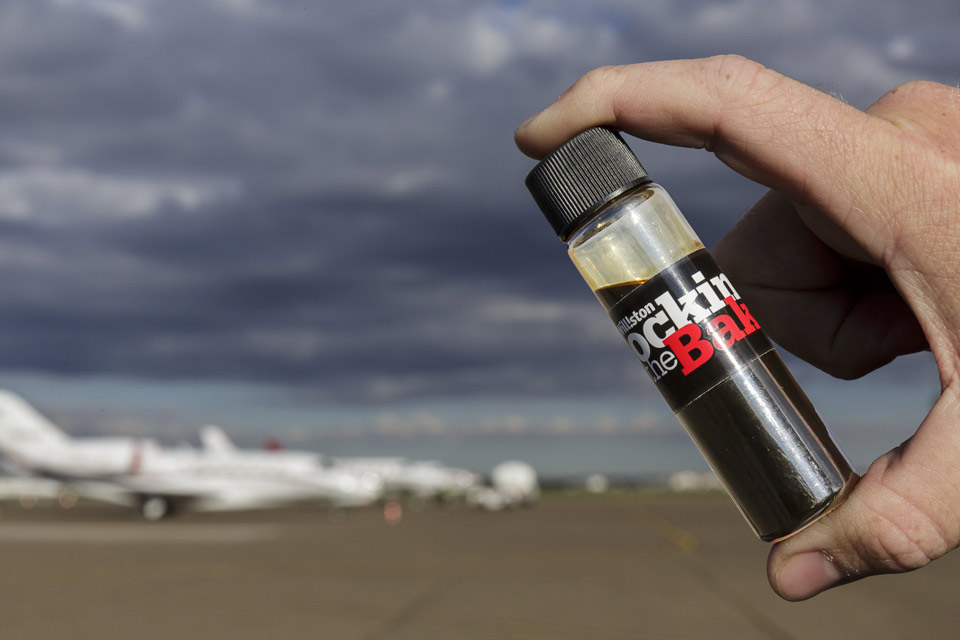
Cessna 172 pilot Tanner Overland crosses Sloulin Field’s Runway 11/29 at midfield, at 1,000 feet agl, and self-announces a turn to a left downwind for landing. Less than a second later, a regional jet announces that it is pulling onto the runway for immediate departure.
It’s a beautiful day for flying—70 degrees Fahrenheit and a cloudless sky. Overland and I have been on a short flight to see sights around Williston, North Dakota—gas flares, an oil well, the VOR, a new route for a truck bypass. These are important, but not for the obvious reasons. Overland is general manager at the Williston Jet Center, the local FBO that now wears the Landmark Aviation brand. He’s also a CFI and professional aerial photographer. We are both laughing because the AWOS just told us the wind is “missing.”
On the northern plains, the wind is never missing.
Another 172 announces its arrival 10 miles out. Overland turns to base and I ready the camera to snap pictures of the approach. Frankly, though, I am more interested in whether that jet is going to get going. I know that back home the tower would have me doing 360s.
The jet moves in plenty of time. But by the time Overland lands and pulls off the runway, two more airplanes have entered the pattern and another is getting ready to go.

Six years ago, western North Dakota would have been dark on any night time satellite photo. Today, more than 150 oil companies in the region produce more oil than Alaska and the lights from the gas flares are brighter than most U.S. cities.
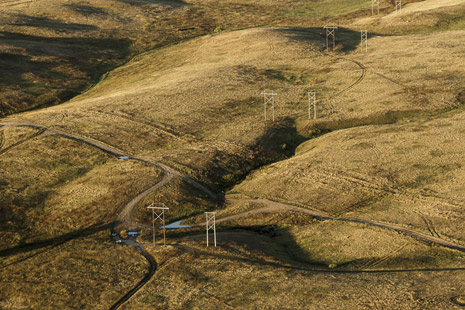
The Bakken formation is one of the most important sources of oil for the United States. It covers about 200,000 square miles. By the end of 2010, oil production had reached 458,000 barrels per day. By 2013, North Dakota had become the second largest oil-producing state in volume produced, behind Texas.
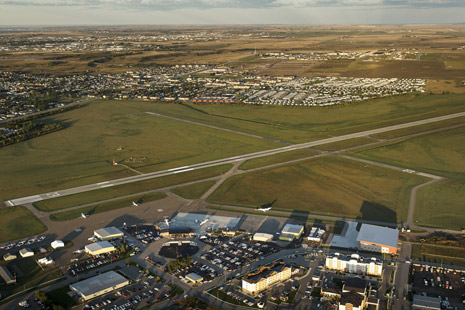
Once sleepy Sloulin Field in Williston, North Dakota, has seen explosive growth because of the boom in the Bakken Oil Fields and now handles traffic far beyond its original design. Charters, corporate jets, and even the airlines are bringing workers into the area.
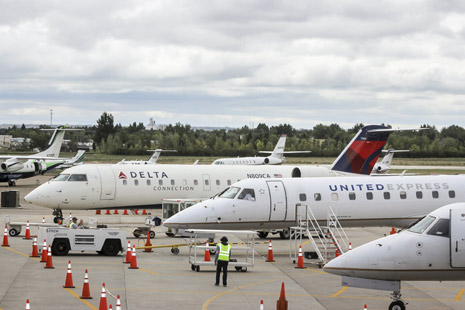
The infrastructure at Sloulin Field can’t bear the weight of the influx of so much traffic—and heavy aircraft.
A bit insane
Sloulin Field International Airport was never designed for explosive growth. But that’s what it has. Sloulin Field is the airport right in the middle of the fastest-growing micropolitan area in the United States. This is the airport for the Bakken oil fields.
“I used to come out here as a kid,” Overland says. “Back then, a King Air 200 was like, wow! Now you look out there and we have a G-5, a Falcon, United and Delta, all the piston planes. I would never have thought this would happen here.”
On the weekends, Sloulin Field is like any small regional airfield. There’s flight instruction, a few hunters coming and going, sightseeing flights, one or two commercial flights in regional jets. There are 55 aircraft based on the field. During the week, however, it all looks a bit insane.
“This location is ideal with its proximity to town,” Overland says. “It’s very handy, but it’s also very restricted. We need more ramp space, but there isn’t any area to expand into. On a busy day we have 20 to 30 corporate airplanes parked here. Add that to our regular tenants and then the commercial planes. We’ve never had to inform an inbound aircraft that we don’t have room, but that doesn’t mean we don’t worry.”
Most of the corporate jets carry executives for businesses already established in Williston or looking to get established. But there is another level, another way to press the edges of what the field can handle. “One of the unique situations is so many job opportunities and not enough people to fill them,” Overland says. “What companies have done is look in other areas of the country to bring in labor. So now on two or three days of the week we have an FBO that basically serves as an airline terminal. We call them crew-change flights. It’s not uncommon to have anywhere from 75 to 100 people waiting for a Dornier 328 to come in so they can get on, or waiting for an ERJ 145 to send them off to wherever they’re going.”
GA traffic is busting the seams as well. “A lot of the travelers who come here have heard about the oil boom,” Overland says. “Many of them want to see them for themselves. People will land here in a Mooney or a Bonanza or something like that, ask for the crew car, and take it for two or three hours to just get a feel for it.”
Williston and North Dakota attract more than the oil industry. North Dakota’s leading industry is agriculture. Western North Dakota gets a lot of hunters, too. Pheasant hunting, deer hunting. “We’re only a 30-minute flight in a small plane from the Theodore Roosevelt National Park—beautiful area down there,” Overland says. “There’s the Missouri River and Yellowstone River and Lake Sakakawea. You can imagine those flights in the fall when the leaves are out.
“We have lots of potential student pilots, too,” he says. “We’re always looking for additional flight instructors. Right now we have a list of about 40 students signed up. If we had more instructors, there would be more.”
If you look at a sectional chart, it appears the airport is slightly outside of town. In truth, the city has swallowed the airport whole.
“One of the problems is that we have power lines at the end of Runway 29. They’re hard to see. And there’s an oil well right there, too. If you depart Runway 11, we have one of the busiest intersections in the whole state right at the end of the runway. It’s in the RPZ [runway protection zone]. So, the population explosion has surrounded the airport. It’s now a landlocked airport. We have nowhere to grow.”
How to grow
On the other side of the airport—a long four-minute walk from the Williston Jet Center, through a commercial terminal where the word cozy would apply only if there were fewer people, outside again, and then into an office space—I meet Steven Kjergaard, the airport manager. Three years ago he was working airport operations in Teterboro, New Jersey. Then he saw a posting for a job opening in western North Dakota. “It’s been an interesting three and a half years,” he jokes.
“When I got here,” he says, “We were served by three Great Lakes Aviation flights a day. That was three Embraer 120s. We were transitioning to becoming a Great Lakes maintenance base. We were just finishing the 30,000-square-foot hangar, partially for them, partially for the FBO. Still sleepy little Williston.
“No one expected us to grow this fast or this heavy. When I got here we were about 15,500 enplanements. That’s about it. Last year we did 96,000 enplanements. [It] more than tripled in three years. That does not include GA and does not include charter flights. Right now we do about 10,000 to 15,000 crew change enplanements a year. That doesn’t include all the corporate jets.”
Kjergaard points at the airplanes parked at the commercial terminal. “Strength of the pavement is really the biggest limitation. The runway has a published weight limit of 25,000 pounds. But if you look at my ramp right now, there are five airplanes over 25,000 pounds.
“We had to do this to allow United and Delta in,” he says. “Now, through contractual agreements, there’s a weight limit of 53,000 pounds. The contract basically says, if something were to happen with the pavement—a failure, anything like that—they’re responsible for the airplane; we’re responsible for the runway.
We don’t sue each other. At the time we were the only airport to do this. It’s an odd situation but we had to have it, because our runway was never designed to handle this.”
I point at a Gulfstream V sitting on the ramp. “He’s operating under his own risk,” Kjergaard says. “If he punches a hole in my pavement, we’re going after him for destroying the runway.
“And another issue we’re running into is that this airport was not designed to handle the CRJs and RJs. The runway is actually sloped too much. We’re at about a 1.5-percent slope and we have to lower it below a 1-percent slope. We have to lower the northwest side of the runway about 90 feet.”
“There’s an oil well up there,” I say.
“The oil well is outside it—barely, just barely,” he says. “It would be a great design class.”
There are two options. Move the airport or expand. If it expands, the problems seem insurmountable. The airport would close for more than a year. The next closest service would be Minot or Dickinson, North Dakota. There is a golf course on airport property now, and moving that would trigger rules about taking public access lands out of use. There is that oil well and the busiest intersection in North Dakota. And there is all the land, all the homes and businesses the airport would have to buy.
The other option is to build a new airfield. On Kjergaard’s conference room wall there is a map of the land north of Sloulin Field and the location of several proposed sites. Site 5 would have the VOR on the field. All of the options would have larger and stronger runways, and a much larger commercial terminal.
I watch two or three corporate jets take off and a Tri-Pacer land. A man in the airport office tells Kjergaard that there is an issue with the installation of some air-conditioning equipment. A crane to get the machines to a roof could be in a flight path. The whole place is that close.
“Right now,” Kjergaard says, “the biggest challenge if you’re a small GA guy is radio communication and working around jets. Especially if you’re not used to working around jets. Sen. [Heidi] Heitkamp would like to see a tower at the new airport. The little RJs you see around here, they’re used to nontowered airports. But we’re talking heavy iron in the future. When was the last time a mainline Delta or United jet flew into a nontowered airport?”
“It’s not necessarily a difficult airport,” Overland says. “Salt Lake Center does a very good job. They know how busy this airport is. But even when you show up just VFR and you may not know how busy we are, there always seems to be someone who says “Well, there are three aircraft in the pattern right now.
“The biggest challenge today,” he adds, laughing, “is finding a place to park—and the crew car may already be gone.”
Boardroom appeal
A good market attracts attention and the market in Williston is exploding. Corporations are pushing for a Chicago flight. The Chamber of Commerce wants more flight options and reduced fares. There is a new direct flight to Houston, which does not replace the crew-change charters.
North Dakota wasn’t supposed to reach a million passengers until 2020,” Kjergaard says. “We reached it in 2011. That’s how fast we grew.”
On the other side of the state, Darren Hall, vice president of marketing for the Fargo Jet Center, is amazed by the rapid expansion and the opportunity for service. The Fargo Jet Center opened Williston Jet Center, in a partnership with Overland Aviation and Ross Aviation, in 2013.
“I started attending the Bakken investors’ conference, looking at what opportunities are available,” Hall says, “One year we did a whole tour, jumped on a bus in Minot, went to Stanley and toured a man-camp, went to Williston and got on an oil rig, et cetera. We were starting to watch what was happening out there and trying to learn the longevity of it.
“We watched the traffic on the airport and during the week they often have traffic that’s comparable in Fargo. Some days they are busier. They are challenged more with where do I put the airplanes? It’s the same FBO that’s been there for 20 years. They hadn’t really improved anything, invested in additional staffing or the facility. The ramp and the FBO were never meant to handle the volume they see today. We saw the opportunity as our planes were going out there on charters and experiencing the service, just like we saw when we came into Fargo. We said we can raise the bar a lot.”
Accomplishing that was a feat, Hall adds. “It was very hard to find locals who wanted to work at the airport and not out in the oil fields. We knew one of the biggest challenges would be staffing. We partnered with Ross Aviation, who owns about 20 FBOs, to purchase the existing FBO. Fargo Jet Center was hired as the management company.” For the first six months, most line-service technicians and mechanics came from Fargo on two-week rotations.
The business landscape changes just as fast as the oil industry, though. Williston Jet Center’s success caught the attention of Landmark Aviation, a global company that owns more than 70 FBOs. Landmark bought Ross Aviation’s 19 FBO locations, including its interest in Williston.
“Williston now has a global range,” Overland says. “It’s not only exciting, it’s awe-inspiring.”
W. Scott Olsen’s most recent book is Prairie Sky: Reflections on Flying and the Grace of Altitude.
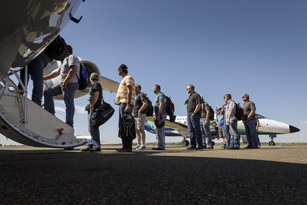
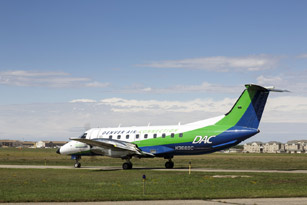
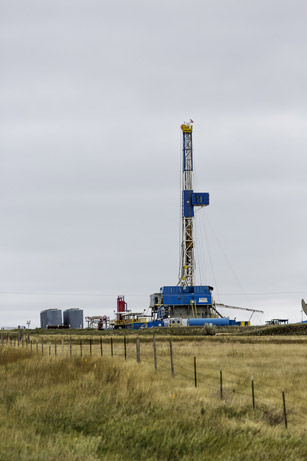
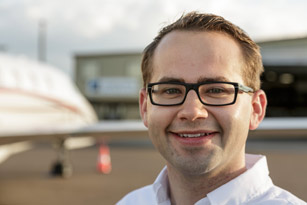
“When I got here we were about 15,500 enplanements. That’s about it. Last year we did 96,000 enplanements. [It] more than tripled in three years.” —Tanner Overland

